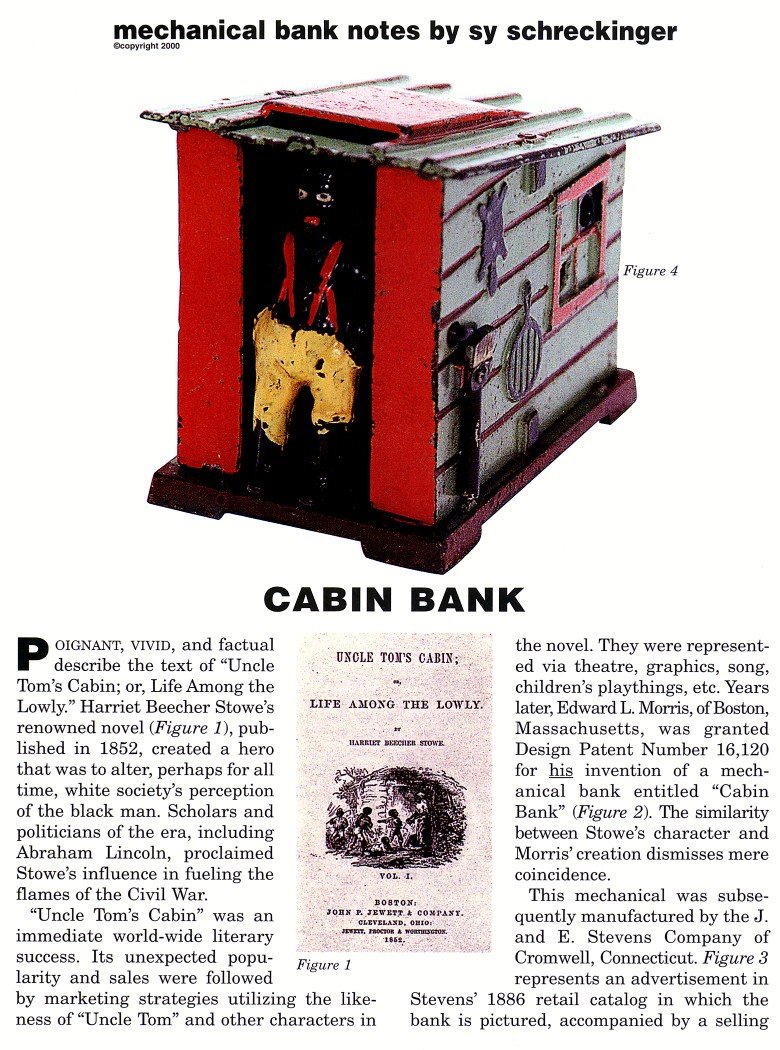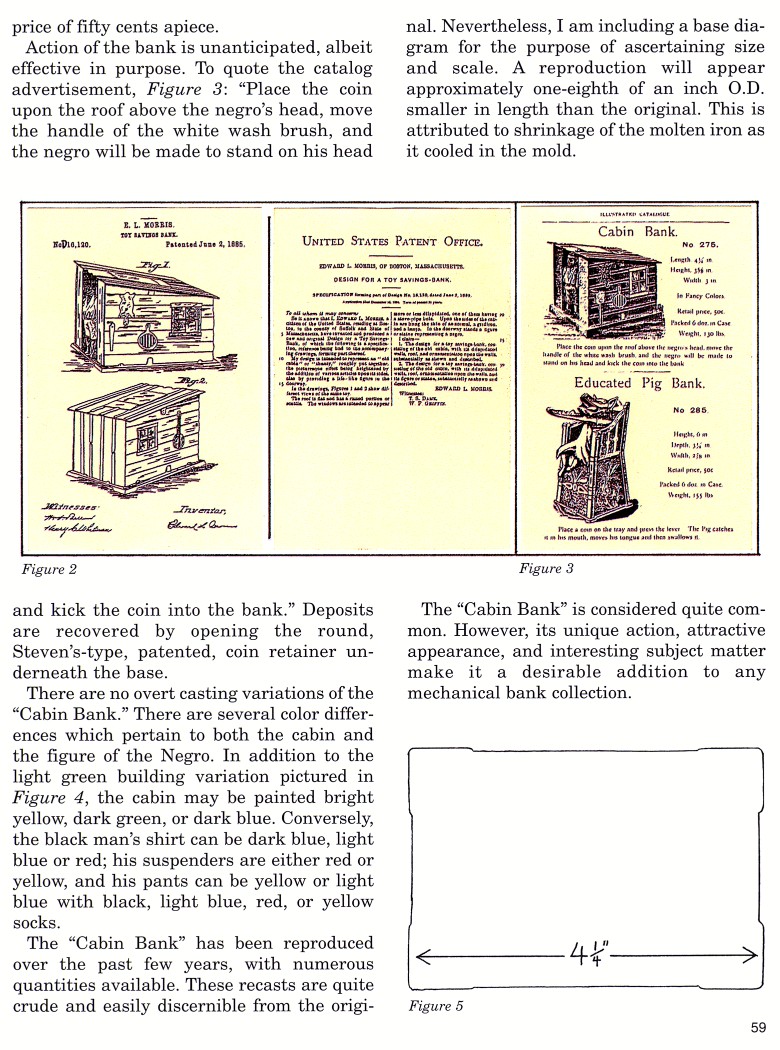|
Cabin Bank
by Sy Schreckinger – ANTIQUE TOY WORLD Magazine – August, 2000
Poignant, vivid, and factual describe the text
of "Uncle Tom's Cabin; or, Life Among the Lowly." Harriet Beecher Stowe's
renowned novel (Figure 1), published in 1852, created a hero that was to
alter, perhaps for all time, white society's perception of the black man.
Scholars and politicians of the era, including Abraham Lincoln, proclaimed
Stowe's influence in fueling the flames of the Civil War.
"Uncle Tom's Cabin" was an immediate world-wide literary success. Its
unexpected popularity and sales were followed by marketing strategies
utilizing the novel. They were represented via theatre, graphics, song,
children's playthings, etc. Years later, Edward L. Morris, of Boston,
Massachusetts, was granted Design Patent Number
16,120 for his invention
of a mechanical bank entitled "Cabin Bank" (Figure 2). The similarity
between Stowe's character and Morris' creation dismisses mere coincidence.
This mechanical was subsequently manufactured by the J. and E.
Stevens Company of Cromwell, Connecticut. Figure 3 represents an
advertisement in 1886 retail catalog in which the bank is pictured,
accompanied by a selling price of fifty cents apiece.
Action of the bank is unanticipated, albeit effective in purpose. To
quote the catalog advertisement, Figure 3: "Place the coin upon the roof
above the negro's head, move the handle of the white wash brush, and the
negro will be made to stand on his head and kick the coin into the bank."
Deposits are recovered by opening the round, Steven's-type, patented, coin
retainer underneath the base.
There are no overt casting variations of the "Cabin Bank." There are
several color differences which pertain to both the cabin and the figure
of the Negro. In addition to the light green building variation pictured
in Figure 4, the cabin may be painted bright yellow, dark green, or dark
blue. Conversely, the black man's shirt can be dark blue, light blue or
red; his suspenders are either red or yellow, and his pants can be yellow
or light blue with black, light blue, red, or yellow socks.
The "Cabin Bank" has been reproduced over the past few years, with
numerous quantities available. These recasts are quite crude and easily
discernible from the original. Nevertheless, I am including a base diagram
for the purpose of ascertaining size and scale. A reproduction will appear
approximately one-eighth of an inch O.D. smaller in length than the
original. This is attributed to shrinkage of the molten iron as it cooled
in the mold.
The "Cabin Bank" is considered quite common. However, its unique
action, attractive appearance, and interesting subject matter make it a
desirable addition to any mechanical bank collection.
Addendum: (from
October, 2000) Refer to
August, 2000, Antique Toy World entitled
"Cabin Bank." Omitted was the fact that there are three casting
variations: In one, the operational spring is secured internally. The
other has two small perforations cast into the left side of the cabin. The
spring is then secured by its being looped through these holes. Finally,
the kick stop on the front end of the roof above the man's head can be
either flat or serrated.
|


